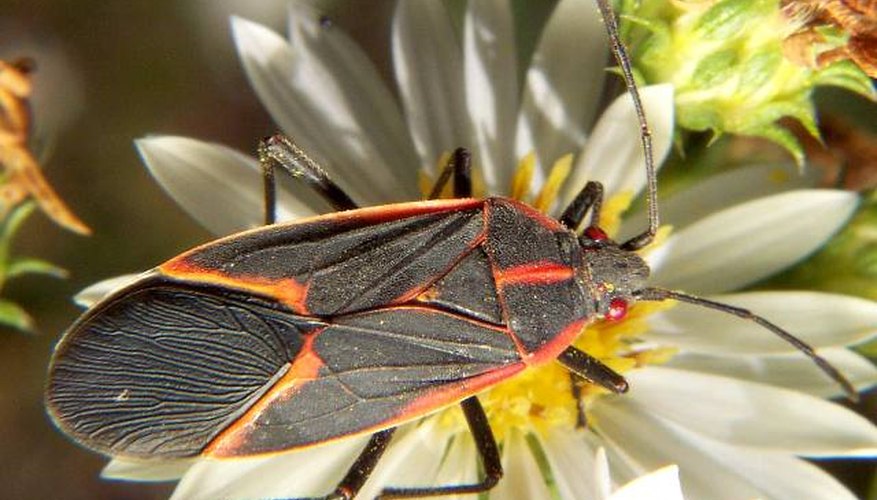Boxelder bugs inhabit maple, ash and fruit trees, in addition to boxelders. They feed and reproduce on trees, shrubs and plants during the summer months and seek shelter inside houses in winter. Mature boxelder bugs have 1.2 cm (1/2 inch) long brown or black oval bodies with orange or red markings. Their mouthparts are designed only for sucking sap from twigs and trees. Boxelder bugs are harmless to humans and do not reproduce inside the house. British gardeners should be particularly relieved to learn that the boxelder bug is only found in North America.
Habits and life cycle
Orange and black boxelder bugs emerge from their hibernation sites as the weather warms up in spring. They feed on ground seeds and vegetation and begin mating within several weeks. Female, seed-bearing boxelder trees and other plants provide a place to lay eggs. They hatch in 10 to 14 days. Boxelder bugs do not harm their host plants in any way. The nymphs are 1.5 mm (1/16 inch) long and bright reddish-orange when they hatch.
- Orange and black boxelder bugs emerge from their hibernation sites as the weather warms up in spring.
- They feed on ground seeds and vegetation and begin mating within several weeks.
Summer feeding
Nymphs are hatched continually throughout summer, but only mature boxelder bugs survive the winter hibernation months. Cold weather in the autumn drives the bugs into walls with a southern or western exposure. These orange and black insects are seen entering any fissure or crack in the wall as temperatures fall. They overwinter inside warm houses, hibernating until spring. The feeding and mating begin again as the seasons change.
- Nymphs are hatched continually throughout summer, but only mature boxelder bugs survive the winter hibernation months.
- These orange and black insects are seen entering any fissure or crack in the wall as temperatures fall.
Controls
Boxelder bugs are not harmful insects to plants and do not bite. Homeowners who want to prevent them from entering homes or other buildings can choose non-toxic methods of control. Horticultural oil and insecticidal soap spray can be used when bugs first appear in spring and again in autumn. Horticultural oil is made from petrol, vegetable or neem seed oil. Horticultural oil and soap spray smother the bugs and interfere with their metabolism. Insecticidal soap is combined with isopropyl alcohol to increase effectiveness.
- Boxelder bugs are not harmful insects to plants and do not bite.
- Homeowners who want to prevent them from entering homes or other buildings can choose non-toxic methods of control.
Look-alike black and orange insects
Soldier beetles are beneficial insects that control harmful insect populations, such as aphids, caterpillars and mites. Their 1.2 cm (1/2 inch) long, elongated bodies have reddish orange and black markings that appear velvety. Both nymph and mature adults feed on soft-bodied insect pests. They also seek wintertime shelter in warm houses. Soldier beetles are beneficial to gardeners who practice the least-toxic methods of integrated pest management control and they are native to the British Isles.
- Soldier beetles are beneficial insects that control harmful insect populations, such as aphids, caterpillars and mites.
- Soldier beetles are beneficial to gardeners who practice the least-toxic methods of integrated pest management control and they are native to the British Isles.
